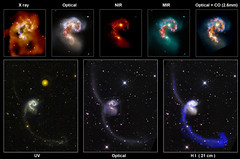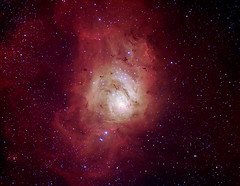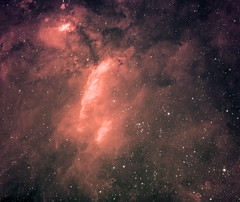On 13th January 2013 the Siding Spring Observatory and the beautiful Warrumbungle National Park near Coonabarabran (NSW, Australia) were terribly affected by the worst bushfire in NSW in the last decade. Although the astronomical facilities have not experienced any severe damage, the bushfire has destroyed some houses at the Observatory (including the Lodge), burnt tens of houses and destroyed the majority of the trees in the National Park.
However, tonight Thursday 14 February, after a month and a day since the bushfire, astronomers are recommencing observing with the 3.9-m Anglo-Australian Telescope at Siding Spring Observatory. I’m one of these astronomers who are now performing the observations remotely from the Australian Astronomical Observatory (AAO) headquarters in North Ryde, Sydney, supported by technical staff at the telescope. The AAO has made public today a press release informing that astronomers are back to work at the AAT!.

The Spindle Galaxy with the AAT. It is an edge-on lenticular galaxy classified as NGC 3155 or Caldwell 53. The data were obtained on 14 February 2013 using the FPI camera of the 2dF instrument at the 3.9m Anglo-Australian Telescope located at Siding Spring Observatory. 8 x 20 s + 5 x 40 s + 1 x 60 s integration time (460 s), combined with IRAF. Colours derived using U, V and I images obtained at the 2.5m Cerro Tololo International Observatory by Kuchinski et al. (2000).
First astronomical observations after the bushfires on 13 January 2013.
Credit: Ángel R. López-Sánchez (AAO/MQ) & Lee Spitler (MQ/AAO),
Night Assistant at the AAT: Steve Chapman (AAO).
However, tonight’s observations are having the AAT looking up to a billion light-years out into space to test our ideas about the still mysterious Dark Energy.








Pingback: NEA 2012 DA14 observed from the AAT | The Lined Wolf
Pingback: Stories from Siding Spring Observatory | The Lined Wolf
Pingback: Spiral galaxy NGC 4027 with AAT: an outreach exercise | The Lined Wolf